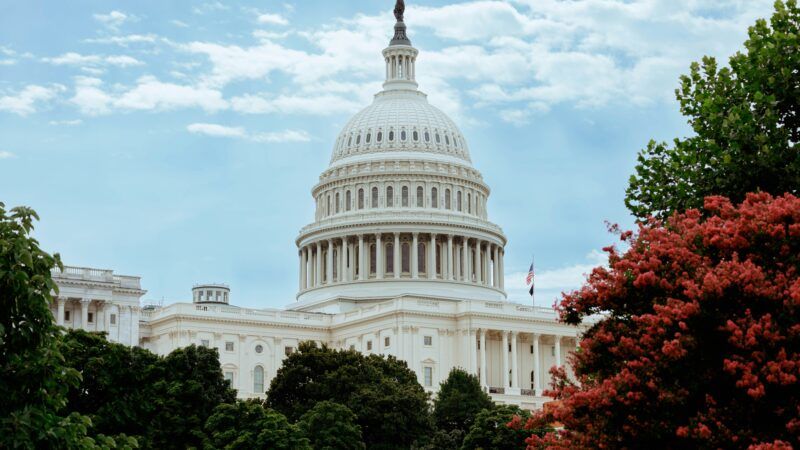The Rescission Bill Reveals How Difficult It Is To Get Congress To Make Even Tiny Spending Cuts
The bill, which could pass the Senate on Wednesday, would trim 13 cents from every $100 of federal spending.

At some point on Wednesday evening, the Senate is likely to approve a bill trimming the federal budget by about $9 billion—though the exact total could change as amendments are offered on the Senate floor.
On one hand, this is a laudable and semi-significant effort at cutting the cost of government. If the rescission bill ultimately makes it through Congress and President Donald Trump signs it, then Republicans will turn all the drama surrounding Elon Musk and the Department of Government Efficiency (DOGE) into a meaningful, if small, reduction in federal spending.
On the other hand, the bill should be proof that "owning the libs" is not an effective strategy for balancing the budget or imposing fiscal responsibility.
The rescission bill contains a bunch of prime cuts of red meat hand-selected by the Trump administration. Foreign aid and public broadcasting are the main things on the chopping block. It's meant to be the most palatable set of cuts for the GOP's political base—and it serves to underscore how limited that approach actually is, in the context of the massive federal budget and expanding budget deficit.
And, yes, of course, you have to start cutting somewhere. It's possible that anything more substantial than a $9 billion cut would not have made it through Congress. Indeed, until Wednesday's vote was in the books, it wasn't a sure bet that even this package would get across the finish line. Senate Republicans needed to call upon Vice President J.D. Vance to break a tie on a procedural vote yesterday after three GOP members—Sens. Susan Collins (R–Maine), Mitch McConnell (R–Ky.), and Lisa Murkowski (R–Alaska)—balked at the proposal.
The difficulty that Republicans faced in getting even just $9 billion in spending cuts to this point (where we still don't know if the bill will pass) reveals the Sisyphean task facing anyone who would like to see the federal budget brought closer to balancing. Federal spending has grown from about $5 trillion a decade ago to nearly $7 trillion this year, and trying to roll back even a fraction of that total is enough to get every Democrat and a few Republicans uneasy.
In the context of the $7 trillion federal budget, this $9 billion cut amounts to a little more than one-tenth of one percent. In other words, if the entire federal budget were a $100 bill, the rescission package would be equal to cutting 13 cents.
We're a long way from the $500 billion rescission request that Sen. Rand Paul (R–Ky.) originally sought, and even farther from the $2 trillion in cuts that the Trump administration (with help from Musk, back when he was on the inside) promised to deliver.
Still, you have to be willing to take the 13 cents when they are offered. Paul is doing the right thing by not letting the perfect be the enemy of the good. In a post on Wednesday, Paul said he was "happy to cast my vote" for the rescission package.
"It might not have cut all that I would have liked to see, but it's a start at reining in Washington's crazy spending," Paul wrote.
Other advocates for fiscal responsibility, like the Committee for a Responsible Federal Budget, have suggested that getting a rescission package—any rescission package—through Congress might help pave the way for more, and potentially more significant, packages in the future.
One can hope. This rescission bill isn't going to do much to solve the federal government's fiscal mess, but it does serve up a depressing reminder of how difficult it can be to get even the smallest of cuts through Congress.


Show Comments (36)